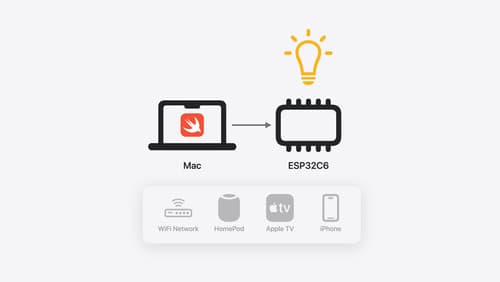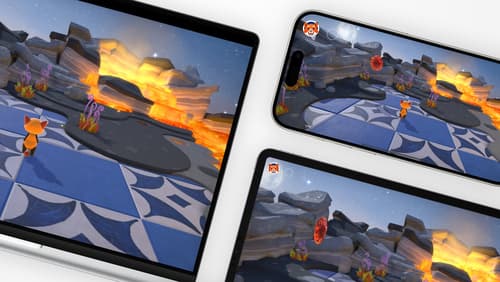How do I write a game in swift
Asked on 2024-07-30
1 search
To write a game in Swift, you can follow several steps and utilize various resources provided by Apple at WWDC. Here are some key sessions and concepts that can help you get started:
-
Explore Swift’s Features and Design:
- Session: A Swift Tour: Explore Swift’s features and design
- Overview: This session introduces you to the fundamental features of Swift, including value types, error handling, and code organization. Understanding these basics is crucial for writing clean and efficient Swift code for your game.
-
Port Advanced Games to Apple Platforms:
- Session: Port advanced games to Apple platforms
- Overview: This session covers how to configure your projects to target both macOS and iOS, bring your shaders and graphics to Metal, and support input and audio. It also provides tips on creating a seamless multi-device gaming experience.
-
Design Advanced Games for Apple Platforms:
- Session: Design advanced games for Apple platforms
- Overview: This session discusses how to design your game to deliver a great player experience on Apple platforms. It includes adapting your game's interface across devices and ensuring it meets Apple’s Human Interface Guidelines.
-
Meet TabletopKit for visionOS:
- Session: Meet TabletopKit for visionOS
- Overview: This session demonstrates how to set up a game, implement game mechanics, and add visual and audio effects using RealityKit. It also covers configuring multiplayer features.
-
Go Small with Embedded Swift:
- Session: Go small with Embedded Swift
- Overview: This session shows how to write clean and intuitive Swift code for embedded devices. It includes examples of using Swift’s interoperability to control hardware components, which can be useful if your game involves hardware interactions.
Steps to Write a Game in Swift:
-
Learn Swift Basics:
- Start by understanding the basics of Swift, including variables, data types, control flow, and functions. The session "A Swift Tour: Explore Swift’s features and design" is a great starting point.
-
Set Up Your Project:
- Use Xcode to create a new game project. Configure it to target multiple Apple platforms (macOS, iOS, etc.) as shown in the session "Port advanced games to Apple platforms".
-
Design Your Game:
- Plan your game mechanics, user interface, and overall design. Follow the guidelines provided in the session "Design advanced games for Apple platforms".
-
Implement Game Logic:
- Write the core game logic using Swift. This includes setting up the game state, handling user input, and updating the game state based on user actions.
-
Add Visual and Audio Effects:
- Use frameworks like RealityKit to add visual and audio effects to your game. The session "Meet TabletopKit for visionOS" provides examples of how to do this.
-
Test and Optimize:
- Test your game on different Apple devices to ensure it runs smoothly. Optimize performance and fix any bugs.
-
Deploy Your Game:
- Once your game is ready, you can deploy it to the App Store for users to download and play.
By following these steps and utilizing the resources from the mentioned WWDC sessions, you can successfully write a game in Swift for Apple platforms.

Meet TabletopKit for visionOS
Build a board game for visionOS from scratch using TabletopKit. We’ll show you how to set up your game, add powerful rendering using RealityKit, and enable multiplayer using spatial Personas in FaceTime with only a few extra lines of code.

Go small with Embedded Swift
Embedded Swift brings the safety and expressivity of Swift to constrained environments. Explore how Embedded Swift runs on a variety of microcontrollers through a demonstration using an off-the-shelf Matter device. Learn how the Embedded Swift subset packs the benefits of Swift into a tiny footprint with no runtime, and discover plenty of resources to start your own Embedded Swift adventure.

Design advanced games for Apple platforms
Learn how to adapt your high-end game so it feels at home on Mac, iPad, and iPhone. We’ll go over how to make your game look stunning on different displays, tailor your input and controls to be intuitive on each device, and take advantage of Apple technologies that deliver great player experiences.
